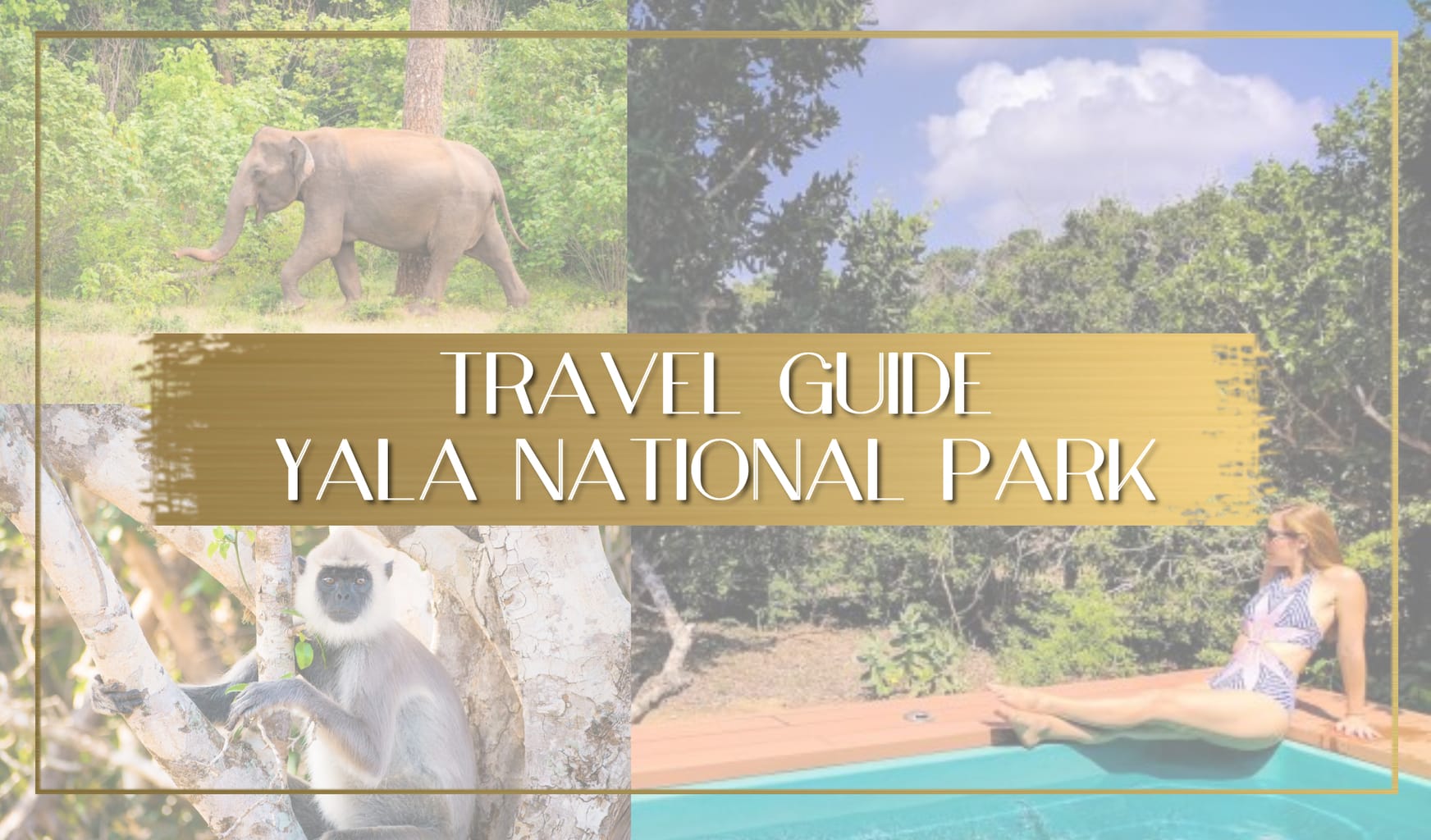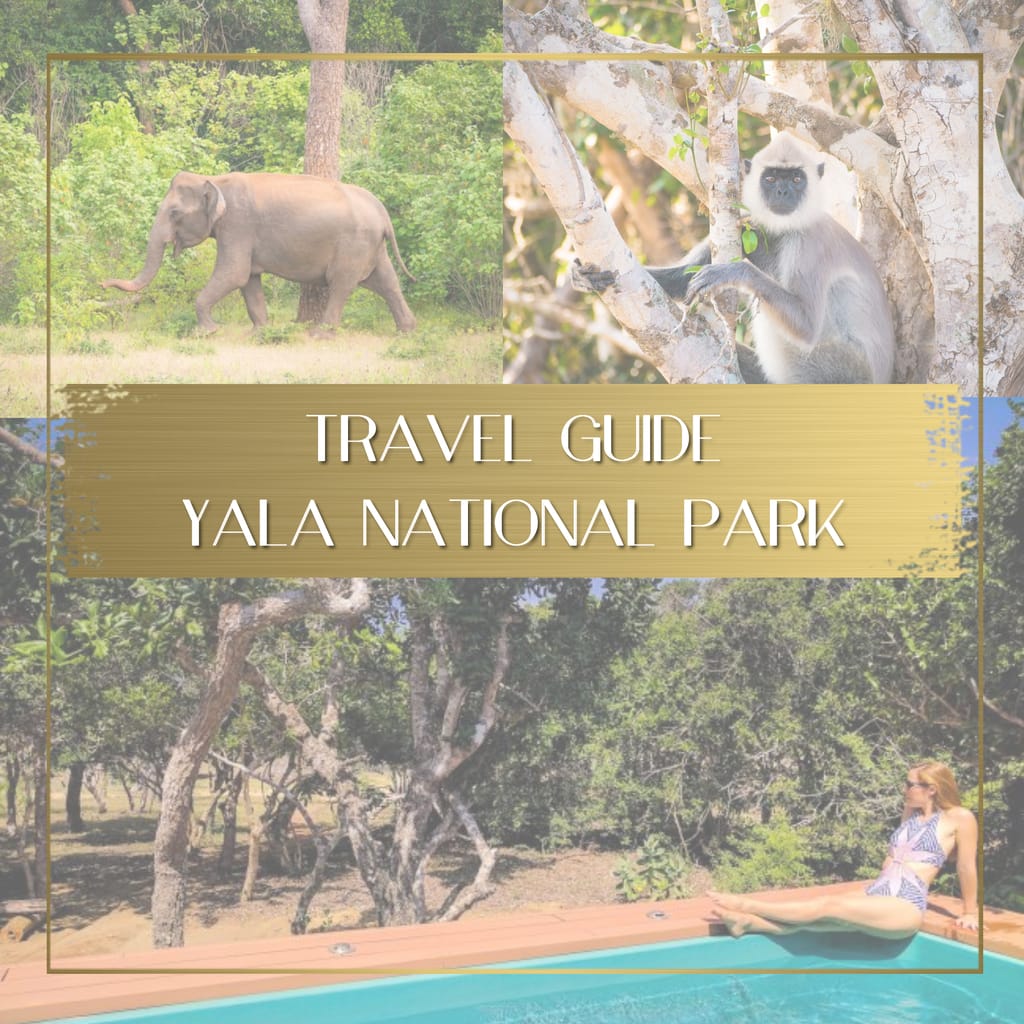
Yala National Park is Sri Lanka’s second largest park. Located on the southeastern tip of the country, it is bordered by the sea on two sides of it and surrounded by local villages on the other. The area was declared a national park in 1939 and it occupies almost 1,000 square kilometers divided into five blocks each with its own vegetation and characteristics although only two are open to the public, block 1 and 5.
Block 1 is the most popular and crowded and it is where most day trippers head to, whereas block 5 is one hour away from the main area where the majority of the hotels and day jeeps for hire are.
The park’s vegetation has forests, scrubs, grasslands, lagoons and everything in between. There is even a reservoir within the park. Although its 44 mammal species and 215 birds are all protected today, the park was originally the hunting grounds for the British elite during colonial times.
Perhaps what has made Yala so famous is its high concentration of leopards, the highest in the world, thanks to the fact that they have no natural predators and, as a result, they are more easily seen parading their beautiful coats around the park, day and night, without the fear of being attacked.
Yala was badly affected by the 2004 tsunami which wiped out all the resorts on its shore and killed 250 people. Interestingly, no animals were harmed as they could tell a tragedy was coming.
The leopards of Yala National Park
The park is best known for its high population of endemic giant leopards, Panthera pardus kotiya. Lacking natural predators other than humans, the leopards of Sri Lanka have evolved to be bigger and less nocturnal than those in Africa, making them easily spotted drinking during the day or hanging around on tree branches.
The park’s website says there are 40 leopards in the park but the rangers will talk about 60-70 of them. There are no official counts and the animals are not tagged and given how elusive they are, it is hard to have accurate figures. Given they are at the top of the food chain, Sri Lankan leopards are the King of the Jungle.
How easy is it to spot leopards? Most of the people I know who have been (and I know many) have all spotted them at least once. Because they are not as scared or shy as elsewhere, you have a good chance of seeing at least one.
Other things to see and do in and around Yala National Park
The park has many animals, although a lot of them are commonly seen in many places across the world so are not as exciting to spot as the leopards. The resident population of elephants is a clear appeal, as are the Bambi style deers and the colorful peacocks. The elephant population could be around the 150 mark in and around the park and these gentle giants are said to walk along the beach (one was spotted around our hotel) and can easily be found on roads and outside the park.
In fact, an elephant bull charged towards our car when we stopped in front of it in the middle of the main road in Block 5. Thankfully, our driver was quick and skilled enough to reverse immediately and there were no cars behind stopping us. There are also pelicans, crocodiles, deer, sloth bears, buffalo, wild boar and many other animals.
As opposed to parks in Africa, Yala and Sri Lanka’s parks in general are not accessible on foot and all vehicles must remain on the well marked paths, never veering off road or letting their passengers off the vehicles except in designated areas. This means that there is little else to do than go on a jeep safari of which there are many on offer at the entrance gates if you did not book yours ahead of time.
Yala safaris consist of 2-3hours in an open jeep with roof trodding the often crowded paths of the park. The roads are in good shape and well maintained so a regular car would be able to drive most of the block 1 paths. There are no sunset view points with gin and tonic drinks but if you stay at a high end lodge like Chena Huts, you will be able to stop for some snacks, even if you do not get out of the vehicle.
One of the few recognisable elements of the park’s largely flat landscapes is the Buddhist monastery of Sithulpawwa, an important pilgrimage site that 2,000 years ago housed 12,000 people. Slightly reminiscent of Sigiriya, and with paintings of Anuradhapura, the Rock Temple can be spotted from pretty much anywhere in the park.
If you are looking for some sea views, the park’s edges are surrounded by the wild waves of the Indian Ocean. From the shore you may be able to spot the Great and Little Basses Reef Lighthouses located about 13km from the shore on the outer reef. These lighthouses were built by the British in the 19th century when they recognised the difficulties in navigating the coast of Sri Lanka were causing many wrecks.
The reefs where the lighthouses stand on were made famous by the 1961 “The Treasures of the Reef” book by Sir Arthur C. Clarke who discovered the wreck of a ship carrying many silver rupees dating back from the time of the Mughal Emperor Aurangzeb, the one who ordered the construction of the Benghazi Mosque in Lahore, in the second half of the 17th century which were believed to be going to finance the stones for the Taj Mahal.
If you stay at Chena Huts you can spot the lighthouses from the hotel’s restaurant. Although the lighthouses are only accessible by boat you can also explore the many wrecks the reefs caused on a dive trip.
Where to stay in Yala National Park
The park operates several simple wildlife bungalows that afford the chance of spending a night in the wild. For more comfortable alternatives there are homegrown hospitality behemoths Cinnamon and Jetwing hotels and the ultimate safari escape, the luxury pool huts at Chena Huts.
Cinnamon Wild Yala is by the sea with direct beach access and chalets by the ocean. It is located on the same path as Chena Huts, very close to the entrance to Block 1. With rooms starting at USD150 (May 2017) per room it is good value. Check rates and availability here
Jetwings Yala offers a more premium option also with a beach location and sea views in a slightly larger scale property with international standards and decoration. Rates start at USD350 (May 2017) per night. Check rates and availability here.
Chena Huts is a small boutique property of just 13 huts scattered across acacia sandy slopes above the sea, each with their private plunge pool. This is privacy and seclusion at its best with the signature service of Uga Escapes. It is premium and the private pools make for a truly romantic, honeymoon worthy experience. Nightly rates match the cache and start at USD1,000 (May 2017) all inclusive for two people. Check rates and availability here
If you are looking for a tented safari you may check out Leopard Trails who offer basic mobile tents and luxury air conditioned ones.
When to visit Yala
Like other parts of the country, Yala is best visited between February and July when the park is drier and the wildlife congregates near waterholes. The park closes every year from July to October start and end dates to be determined when the weather patterns change into the rainy season. These months are breeding time for the leopards and an opportunity to give them some respite and for the park authorities to conduct repairs and maintenance activities.
Other things to know about Yala National Park
The park is crowded at times. We were told that up to 1,000 vehicles could be entering its gates during the peak local holidays. If you try to imagine what this is like, we experienced a fraction of it when a male was spotted laying on the pavement of the main road into the park at closure and pretty much every car that was in the park on a regular tail end of the season day headed there.
The traffic jams and the hordes of people getting of the vehicles and simply walking in the open toward the animal was something I had always feared of Africa’s most popular parks but had never experienced. It was worrying and sad to see to say the least.
The park gates open from 6am to 6pm daily and at closure the drivers will cut each other to ensure they make it out of the park on time. If you are staying somewhere far from the entrance you may have to get up really early as these semi-nocturnal animals are elusive during the daylight hours so most visitors try to hit the park before sunrise as soon as it opens.
An entrance ticket needs to be bought from the park’s offices but high properties like Chena Huts will buy them for you the night before. Queues at opening times are not rare, so be prepared.
Bring sun screen as even though there is a roof, the sun is only coming up or down at sunset and sunrise so the rays are coming in sideways. A scarf to cover your mouth and eyes will come in handy when the rally of cars wanting to exit or over take your vehicle raise a cloud of dust or when you are driving to Block 5 and back in the night time and the insects end up in your mouth and hair because they are attracted and confused by the car’s headlights.
Tie your hair back if you don’t want to look like you put your fingers into the electricity socket. Other than that the clothes you wear should be in neutral colors to blend in but you don’t need any safari clothes as you will basically be sitting in a car.
